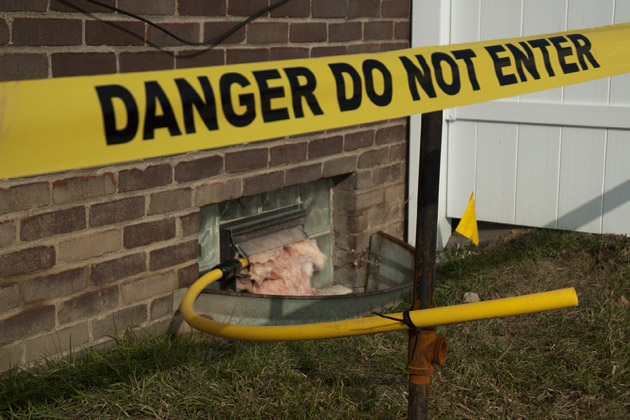Shale Drilling: Answer to Abandoned Wells?
The lastest gas-drillking rush focusing on Marcellus Shale could play a key part in plugging old abandoned gas wells, but also brings the risk that old wells could contaminate the soil and water with the migration of gas and chemicals from the old wells.
"The whole area up here is like Swiss cheese," said Weltner, 80, secretary-treasurer of Belmar Association Inc., which operates the treatment system. "It just has holes through all the different strata in the ground, so there's an awful lot of opportunities for contamination of the groundwater. And I think a lot of people are concerned about it, and a lot more communities are getting a public system" to replace water wells.
Most of the state's abandoned wells are in Western Pennsylvania. They arc though McKean, Venango and Butler counties and, in smaller clusters, around the Pittsburgh area.
Unplugged wells pose risks of illegal dumping, water pollution, cave-ins, gas seepage and even explosions, but the state can afford to plug only about 130 a year. At that rate, it could take the state more than 61 years to plug the 8,262 remaining wells that officials know about, and more than 1,350 years to plug the rest -- if crews could find them.
In the past, drillers abandoned wells because there was no rule that said they couldn't. Companies that no longer exist cannot be held liable.
The rejuvenation of the fuel-drilling industry in Pennsylvania could provide a chance to deal with abandoned wells, officials say. With the backing of Gov. Tom Corbett, the Senate and House in November passed preliminary bills that would establish "impact fees" on the industry, and some of that money would be put toward plugging old wells.
Abandoned wells can appear -- or hide -- in a number of forms. Some are holes that are several feet wide and more than 100 feet deep. Others are a few inches of pipe at the wellhead poking up from the ground. Some are camouflaged by cave-ins and overgrowth, appearing as small dips in the landscape.
The Department of Environmental Protection ordered an emergency plug of a well in Moon in 2010 when residents near J.A. Allard Elementary School reported smelling gas from an abandoned well. A house in McKean County exploded last February, leading the DEP to order the owner of three abandoned wells there to pay to have them plugged.
Drillers pay a surcharge when they obtain permits, which amounts to about $1.5 million annually that the state uses to plug wells, according to DEP figures. The cost of plugging can vary. DEP contracts since 2009 have ranged from as little as $3,027 per well to as much as $194,082, an agency spokesman said.
The Senate's bill, which proposes higher well fees than the House measure, would generate an additional $25 million annually for statewide environmental projects that would include well plugging, mine drainage cleanup, parks and water quality monitoring.
"We're trying to tie in ancient environmental problems with new development, which is fantastic," said David Strong, a Jefferson County environmental scientist who sits on several of DEP's citizen advisory boards. "We can find new money to fight these old problems."
It's in the industry's interest to help solve those problems, said Strong and several others, including industry officials. One of the biggest problems is finding most of the abandoned wells. If a company unwittingly drills a well near an abandoned well, it can create a path for gas to flow uncontrolled to the surface or into groundwater, costing profits and causing a safety hazard.
The old holes usually range from 1,500 to 3,500 feet deep, said Cleason Smith, who owns Hydrosystems Management Inc. in Washington County. Smith's family photos of Washington, taken in the 1800s, show about a dozen drilling derricks next to buildings in the foreground -- and another dozen in the background, to the fading horizon. The state never had records of where those wells and others like them are located, according to its website.
Even if an old and new well don't cross, gas migrating from deep wells can reach abandoned ones and cause contamination through natural fissures, or if man-made seals don't hold, Smith said.
"Drilling through the rocks that have previously sealed in the formation ... a lot depends on the efficiency of those borehole seals in preventing any leakage," Smith said. "If there's any leakage from a Marcellus well, there's potential for it to make contact with an old, abandoned oil and gas well."







